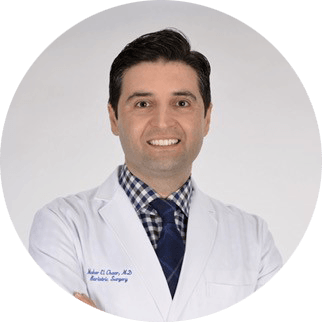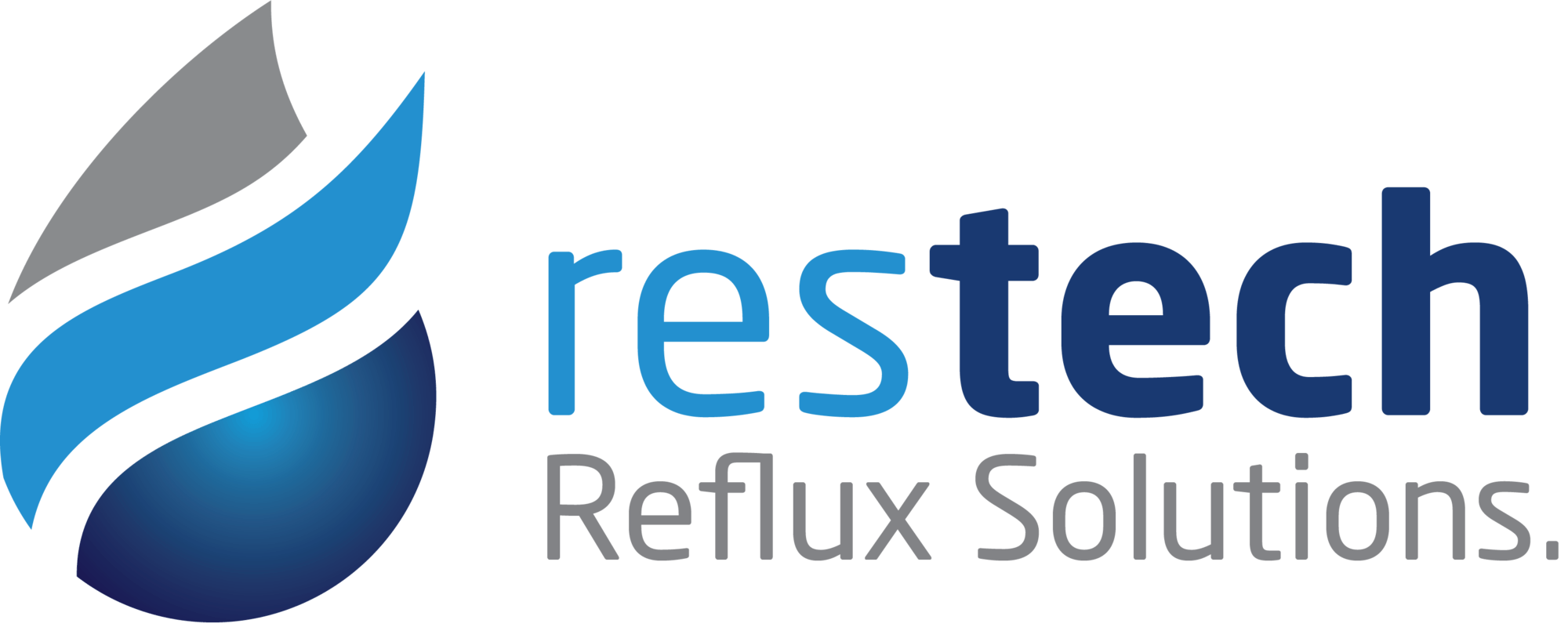
Stretta Therapy for Reflux
When patients suffer from chronic gastroesophageal or laryngopharyngeal reflux disease (GERD or LPRD) that is not well controlled with medications, or where long-term medications are not a viable option, Stretta is an alternative to surgery and implants. Stretta Therapy is a unique non-surgical outpatient procedure, performed transorally, that takes about an hour, with patients returning to normal activities within a few days.


How Does Stretta Treat GERD?
Stretta Therapy is a minimally invasive, endoscopic procedure that significantly reduces GERD symptoms, allowing a majority of patients to eliminate or significantly decrease use of PPIs. Stretta is an outpatient procedure performed in less than 60 minutes, allowing patients to return to normal activities the following day.
Stretta is the only widely studied minimally invasive treatment option for GERD – and has been proven safe and effective in more than 40 clinical studies and 25,000+ procedures. Patients experience significant and lasting symptom relief from 4-10 years*.


Stretta provides a safe, easy, and effective treatment for my patients who cannot tolerate PPIs, do not have complete resolution of symptoms from a PPI, or simply don't want to pop a pill every morning for the rest of their lives. Having a minimally invasive option to offer these patients has been a God-send. While many of my patients hate taking pills, few are ready to jump under the scalpel. Stretta has provided the perfect intermediate option.
Taavi Reiss, MD

Bariatric surgery as a treatment modality for morbid obesity has proven to be very safe and effective; however, one of the few long term side effects that our patients suffer from is refractory GERD, including heartburn and regurgitation. Stretta has been our main line of treatment as a non-invasive endoscopic option for bariatric patients suffering from postoperative GERD. The use of Stretta in our practice helped us resolve one of the few issues we deal with on a daily basis: improved patient satisfaction, and allowed us to discontinue proton pump inhibitors postoperatively.
Maher El Chaar, MD, FACS, FASMBS

How Stretta Therapy Works
The Stretta system delivers low power, low temperature radiofrequency (RF) energy to the lower esophageal sphincter (LES) muscle and gastric cardia. This energy remodels the tissue, resulting in improved barrier function and fewer random relaxations that cause reflux symptoms.
Stretta treats the functional problem that may cause GERD: a deficient sphincter muscle.
RF energy has been shown to thicken the musculature and increase the size and amount of smooth muscle fibers in the treatment zone. The result is a measurable strengthening of the LES and a reduction in transient LES relaxations, without stricture or fibrosis. Studies show this effect may repair the deficient sphincter and restore the natural barrier function of the EGJ.

Stretta Results
Stretta is by far the most widely studied minimally invasive treatment option for GERD – and has been proven safe and effective in more than 60 clinical studies and 25,000 procedures. Studies show that patients experience significant and lasting symptom relief from 4-10 years*, without the higher complication rates of surgery, or the higher costs.
* While clinical studies support the safety and effectiveness of Stretta for patients with chronic GERD (gastroesophageal reflux disease), individual results will vary from case to case and there are no guarantees of successful outcome.
Always consult your physician for diagnosis and appropriate treatment options for your condition. Information on this website should not be used as a substitute for consulting with a medical professional.
Patient Stories

Jenny had chronic symptoms of reflux for three years that were uncontrolled with medications. Her GERD symptoms affected many aspects of her life, going out to dinner, exercising, socializing and even singing in the choir became difficult. She saw a nutritionist and tried several prescription medications, but none of them resolved her symptoms. Her gastroenterologists introduced her to the Stretta procedure. Jenny chose Stretta because she was concerned about the side effects of long-term PPIs and did not want to have surgery. Three months after her Stretta procedure, Jenny is off her medications and enjoying life again.*

Bob had chronic sleep apnea, and the exhaustion caused by lack of sleep, triggered symptoms of atrial fibrillation (afib). After multiple trips to sleep and heart specialists, he turned to his Gastroenterologist. The underlying cause of his problems turned out to be silent reflux, he was regurgitating from his esophagus up into his throat all night long. Bob had a Stretta procedure 13 months ago and now gets a good night’s sleep. His reflux episodes have been significantly reduced and he can rest easy because his afib has also resolved.*

Sandy coughed all the time and chronic laryngitis lowered her voice to a whisper, making it difficult to even talk on the phone. She never knew she had GERD until her dentist noticed acid erosion of her teeth. The chronic GERD also led to Barrett’s Esophagus. She was interested in a less invasive option than surgery. Sandy had a Stretta procedure a year ago, she has significantly lowered her medications and has seen an improvement to her voice and other silent reflux symptoms.*

John suffered with severe GERD symptoms since he was 25. He was taking prescription medications and when those still didn’t work, he turned to anti-reflux surgery. After two failed surgeries, his gastroenterologist introduced him to Stretta. Now, more than 10-years after his Stretta procedure John is symptom free, and the Barretts Esophagus that was caused by his chronic, uncontrolled GERD has also regressed.*
*The individual opinions expressed here are those of the featured Stretta patient and not those of Restech.These opinions should not be considered medical advice. You should ask your doctor about all treatment options along with their risks and benefits to determine if Stretta is an appropriate option for you. While clinical studies support the safety and effectiveness of Stretta for patients with chronic GERD (gastroesophageal reflux disease), individual results will vary from case to case and there are no guarantees of successful outcome.
Patient FAQs
What can patients expect in terms of improvements in GERD symptoms?
Every patient is different in their response to Stretta Therapy. Some patients see improvement more quickly than others, and studies show the symptoms may continually improve for six months or longer. Patients are advised to continue their previous anti-secretory regimen for two-months after Stretta, and follow a modified diet of full liquids for 24 hours and soft diet for two weeks.
Do patients experience pain after Stretta Therapy?
Patients may experience some discomfort after Stretta Therapy, which in most cases can be managed with OTC analgesia (liquid acetaminophen), or, in severe cases, stronger prescription pain medication. Patient should crush all medications or use liquid medications for at least one month after treatment. Patient should refrain from using NSAIDS for two weeks after the Stretta procedure, and avoid any instrumentation of the esophagus for at least one month.
Clinician FAQs
Does Stretta cause distal esophageal strictures?
A review of the FDA maude database, as well as Stretta clinical studies show no instances of stricture or fibrosis in Stretta patients. Double-blind sham-controlled study of 22 Stretta patients (Arts et al 2012 - The American Journal of Gastroenterology).
• Patients were administered sildenafil, a smooth muscle relaxant, which normalized the gastroesophageal junction compliance to pre-Stretta levels, arguing against GE junction fibrosis as an underlying mechanism.
• Stretta decreased the number of TLESRs.
• Stretta is designed to minimize damage to the esophagus. Maintaining tight temperature control prevents mucosal damage to the distal esophagus and gastroesophageal junction thus preventing stricture formation.
Does Stretta relieve GERD symptoms by placebo effect?
No – in fact several mechanisms of Stretta have been shown in clinical evidence:
• Increased wall thickness (Chang et al 2001 – Gastrointestinal Endoscopy)
• Increased LES pressure and decreased TLESRs (Tam et al 2003 – Gut)
• Decreased tissue compliance and decreased TLESRs (Arts et al 2012 – American Journal Gastroenterology)
• Decreased acid exposure (Arts 2007, Perry 2012, Aziz 2010)
• No placebo effect lasts for 48 months. 3 separate 48 month studies show sustained effect of Stretta therapy.
What is the mechanism of action?
New studies are also revealing the mechanism of radiofrequency delivery to smooth muscle at the cellular level – these correlate with physiological effects noted above
RF energy to smooth muscle results in structural changes to and growth of the smooth muscle (size and amount) and redistribution of the interstitial cells of cajal (Herman et al2013 - poster presentation at digestive disease week conference).
• A change to stimulate myofibroblasts which directly influences the production of muscle.
• A change in the muscle fiber to connective tissue ratio, whereby this ratio becomes higher because the amount of connective tissue decreases while the muscle fiber tissue increases.
• Increase in collagen 1 and decrease in collagen 3.
Does Stretta causes neurolysis (nerve damage) in the distal esophagus?
Studies show that is not the case.
Dibaise and colleagues followed a cohort of 18 patients 6 months after Stretta and found no adverse effects on abdominal vagal function and no significant changes in any esophageal motility parameter.
• A trend was noted toward a reduction in the number of TLESRs induced by gastric air distention. No detrimental effects on peristalsis or swallow-induced les relaxation pressure were seen (Dibaise et al 2002 - The American Journal of Gastronenterology).
• In 13 patients followed for 6 months after Stretta
Esophageal peristalsis (low-amplitude peristalsis in the same three patients), and swallow-induced relaxations were not significantly altered by the radiofrequency energy delivery procedure, which also argues against the theory of neurolysis (Arts et al 2007 - Digestive Disease and Sciences).
• It is estimated that 4% – 40% of patients who undergo laparoscopic fundoplication develop intraoperative vagal damage to some degree (Trus et al 1997 -Journal of Gastrointestinal Surgery).
Does Stretta decrease esophageal acid exposure?
Many studies have shown a decrease in esophageal acid exposure after Stretta.
• Arts and colleagues followed 13 patients over 6 months, esophageal ph monitoring was significantly improved, from 11.6% ± 1.6% to 8.5% ± 1.8% of the time at ph <4 (p< 0.05) (arts et al 2007 – Digestive Disease Science)
Normalization of the pH monitoring (<4% of the time at ph <4) occurred in three patients.
• The Demeester Score showed a similar improvement, from 46.8 ± 7.3 to 35.6 ± 6.7 (p = 0.01).
• Prospective randomized sham study of 36 patients showed significant reduction in esophageal acid exposure (Aziz et al 2010 - Surgical Endoscopy and Other Interventional Techniques)
• Stretta meta-analysis showed a reduction in esophageal acid exposure and improvement in Demeester Scores (Perry et al., 2012 - Surgical Laparoscopy, Endoscopy & Percutaneous Techniques).
• 11 of 18 studies reported on pH levels pre and post Stretta (364 patients – 11.9 months)
• esophageal acid exposure decreased from a mean of 10.29% ± 17.8%to 6.51% ± 12.5% (p = 0.0003)
• 13.1months in 267 patients across 7 studies (p = 0.0074).
Is Stretta cost effective?
• Comay and colleagues followed a cohort of patients for 5 years after being randomized to either once daily PPI therapy or, Stretta, or fundoplication, showed that PPIs were the most cost effective strategy depending on the price of omeprazole per pill. But, if the price of omeprazole was over $2.00 per pill, then Stretta was deemed the most cost-effective of the three strategies.
• (Comay et al 2008 -Canadian Journal of Gastroenterology).
There is great variability in the cost of PPIs in the united states. In 2013, the average retail price per pill in one major pharmacy chain was for $2.63 per pill for omeprazole, $4 per pill pantoprazole, and for $8.30 per pill esomeprazole. The costs of medications in Canada—where the study was conducted, are substantially below us costs, even generics. Further, the hidden cost the patient must also take into consideration is the increasing number of side effects of PPIs that are being reported and the increasing appreciation of treatment failures (Van Pinxteren et al 2010 - Cochrane Database of Systematic Reviews).
Who is the ideal Stretta patient?
Stretta is ideal for patients who are refractory to meds and don’t have erosive esophagitis.
• Approximately 70% of GERD sufferers are non-erosive
• Symptom control remains the primary goal of GERD treatment, pH “normalization” has not been shown to correlate to symptom control.
• Stretta improves the structure of the muscle reducing TLESRs, repairing the underlying cause of GERD regardless of pH
In the Corley randomized trial, why was drug use and acid exposure not significantly different in treatment vs sham arm at 6-months?
• Primary endpoints of improvements to reflux symptoms and quality of life were met.
• Drug use and acid exposure were secondary endpoints of this study.
• “Analyses of symptom improvement vs. Acid exposure suggested that symptom improvement was associated with decreased esophageal acid exposure.”
• A comparison of patients before vs after treatment showed acid exposure decreased significantly for all treated patients between baseline and 12 months.
• It is now also well known that the effects of RF treatment can take up to 12 months to be fully realized.
Is Stretta Ablation? I’d be hesitant to ablate tissue in the LES.
STRETTA IS NOT ABLATION
• Stretta is a non-ablative treatment and the mucosa is cooled with irrigation fluid during the procedure. The definition of ablation is “destruction” – that would cause scarring and scarring would cause fibrosis. The recent study by Arts/Tack shows that this is not the case. In this important study the patient was given Sidenafil (Viagra – smooth muscle relaxer) post Stretta, and the muscle relaxed. Tissue experiencing fibrosis would simply not relax. Stretta therapy heats tissue between 65 and 85°C in the muscularis, which is the temperature of coffee. The temperature delivered to the mucosa cannot exceed 49°C.
• Studies show that RF energy delivered to smooth muscle actually improves – not destroys tissue.


